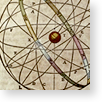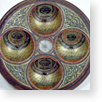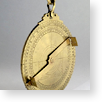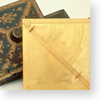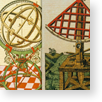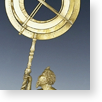This room contains a rich array of instruments designed to measure time: sundials, nocturnals and astrolabes that showed the hour by day or by night.
Without clarifying what time is, astronomy has always striven to define its units on the basis of celestial phenomena, and to develop precise timekeeping instruments.
Displayed here, along with commonly used scientific objects, are highly refined instruments fabricated in the artisans' shops that began to flourish in the 16th century. In the Germanic states, for instance, the members of the Schissler family were renowned, and many of their products entered the Medicean collections. Among the Italian instrument-makers, Giovanni Battista Giusti, Stefano Buonsignori and the Della Volpaia family were outstanding. Especially important in this room are the instruments from the legacy of Viviani, Galileo's last disciple. This collection includes objects of many kinds, revealing Viviani's specific interests in the field of the astronomy.
Astronomical Instruments
Along with large instruments for observatories, the astronomers developed many devices, almost always conceived for the measurement of time. The celestial ...
(4 objects)
Measuring Time by Day: Sundials
The first chronometric instruments were based on the changing direction and length of shadows cast by objects exposed to sunlight. The shadow of an indicator ...
(30 objects)
Measuring Time by Night: Astrolabes and Nocturnals
Highly versatile instruments, astrolabes could also be used to tell the time by day or by night, based on direct measurement of the height of the Sun or ...
(24 objects)
Great European Instrument Makers: the Schisslers
In the 16th century many rulers realized that mastery of scientific knowledge could be a powerful political tool. The new climate stimulated the birth ...
(9 objects)
Italian Makers of Astronomical Instruments
In the Italian states, individual artisans or families of scientific instrument makers flourished. Their products were as good as those of foreign make, ...
(29 objects)
Astronomical Instruments from the Viviani Legacy
Galileo's last pupil, Vincenzo Viviani (1622-1703), collected and made mathematical instruments. He left his collection to the Hospital of Santa Maria ...










